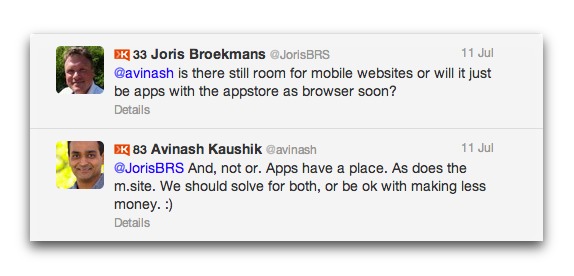Does Google Hate Mobile Subdomains?
Since Google announced its most recent smartphone ranking changes last month, I’ve seen a number of commentators online saying that Google will penalize you if you don’t use a responsive site. This isn’t the case. I’ve gone over many of these issues in detail in past columns, but here’s a short rebuttal for those of […]
Since Google announced its most recent smartphone ranking changes last month, I’ve seen a number of commentators online saying that Google will penalize you if you don’t use a responsive site. This isn’t the case.

Your risk of being attacked by Bigfoot riding a Sharknado may be greater than your risk of becoming less visible in search as a result of dedicated mobile URLs.
I’ve gone over many of these issues in detail in past columns, but here’s a short rebuttal for those of you who are considering hosting your mobile site at a mobile subdomain (like m.exampledomain.com) instead of making a responsive site.
The Risk Of Duplication Myth
“There’s a risk of duplication,” they say.
I say…
I have yet to see convincing evidence that dedicated mobile sites lose out to responsive design sites in mobile search rankings. In fact, I’ve seen m dot sites perform well in mobile search even when they fail to employ bidirectional annotations.
I recently heard a speaker who claimed that making the switch from a dedicated mobile site to a responsive design had led to a rankings boost for one of his sites. However, when I looked at that site itself, it was clear that the site had previously been penalized, meaning that the boost could well have been the result of a manual penalty being lifted. Whether this was due to the switch to responsive, a more user-friendly redesign in general, or a reconsideration request in conjunction with the new site launch is unclear.
In fact, because there are more m dot sites out there in general, there are more successful m dot sites in search results today than there are responsive sites.
Look, there’s a risk of being eaten by a Sharknado — but since I have never seen one in person, I’m going to assume that risk is low.
The Google Penalization Myth
“All of Google’s recent rankings demotions were related to mobile subdomains,” they say.
I say…
Not all of them, actually. In fact, if you read Google’s list of common mistakes in configuring mobile sites, you’ll see that several of them apply to any kind of mobile setup. In fact, one of the things they include is poor page speed — and responsive sites are notoriously slow compared to their non-responsive counterparts.
Even so, the fact that most of Google’s recent ranking demotions were related to issues with mobile subdomains merely reflects the fact that the great majority of mobile sites out there are hosted on mobile subdomains. When Google posted these common errors originally, they posted them as the most common smartphone configuration errors.
Because mobile subdomains are the most common mobile configuration, it stands to reason that Google would see more errors from mobile subdomains than from responsive Web design. If responsive websites were more common, we would probably see Google addressing things like a lack of relevant keywords, incompatibility with an international audience, and lack of feature-based innovation as common errors. As it is, they focus primarily on common errors on sites that were built with mobile subdomains.
The “Responsive Is The Future” Myth
“Separate mobile websites are a relic of the past,” they say.
I say…
They said the same thing about static websites when Flash was in vogue. If you want to know how that turned out, try visiting a Flash-heavy website on your iPhone.
If you’ve been in SEO for a while, you know enough to be skeptical when designers and developers are trying to predict the future of the Web. Many of them chase the latest trends without considering the user. Since we rely on people to visit and use our websites, this strategy is not sustainable.
If designers and developers could predict the future, they wouldn’t be working as designers and developers, but would likely be in Vegas letting it all ride.
Designers who have been cheerleaders for responsive design as the future of the Web have pointed to Google Glass as evidence of the need to separate content from presentation. Yet mobile sites look best on Google Glass. Where’s the responsive revolution?
Finally, it’s hard to say that responsive design is the future of the Web when it fails so many users in the present day. How can something be the future of anything if it doesn’t work all that well today?
Final Thoughts
No, I’m not anti-responsive Web design. In fact, I believe responsive Web design can be extremely user friendly if you do it right and it’s appropriate for your audience.
Unfortunately, many do not consider the audience or do it right. All too often, it’s just the solution for site owners who are more concerned with efficiency than user experience. That doesn’t make it a bad solution, per se, but it’s often not the best one for the user or the business.
As Google’s analytics and customer experience guru Avinash Kaushik recently said, “Non-mobile friendly websites suck. Desktop sites with responsive design for mobile devices just suck less.” He continued:
Not everyone at Google hates m dot sites. Officially, they support them as they support responsive Web design and dynamic serving. What they hate is any site that doesn’t satisfy the user, including some responsive sites.
Keep this in mind and your mobile SEO will soar — m dot or not.
Opinions expressed in this article are those of the guest author and not necessarily MarTech. Staff authors are listed here.
Related stories
New on MarTech
